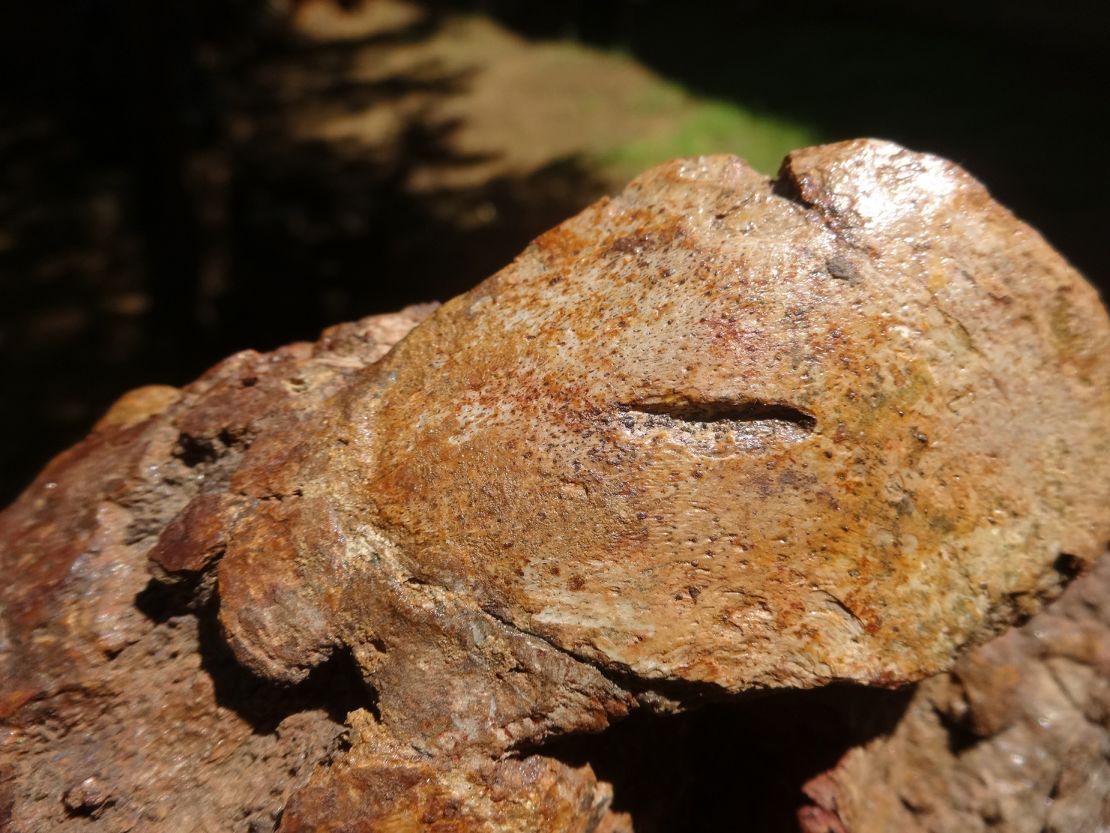Sign up for CNN’s Wonder Theory science newsletter. Explore the universe with news on fascinating discoveries, scientific advancements and more.
A rare fossil has provided a snapshot of what was an exceptionally unlucky day for a prehistoric sea cow.
The now-extinct species of dugong, a manatee-like marine mammal, was swimming in the sea about 15 million years ago when it was preyed upon by two animals: a crocodile and a tiger shark. The latter left one of its teeth impaled in the sea cow’s body.
By analyzing the fossil, unearthed in Venezuela, researchers were able to piece together how the sea cow, which belonged to an extinct group of animals known as Culebratherium, perished.
Their study, published Thursday in the Journal of Vertebrate Paleontology, captures a moment in time that provides unique insight into how the food chain worked in the early to middle Miocene Epoch 11.6 million to 23 million years ago.
“It’s super rare to find evidence of two predators on a single specimen,” said lead study author Aldo Benites-Palomino, a doctoral student in the department of paleontology at Switzerland’s University of Zurich. “It shows why we should be exploring for fossils in tropical regions like (Venezuela).”
Anatomy of an attack
The fossilized remains — a partial skull and 13 vertebrae or backbones — revealed three types of bite marks. Their shape, depth and orientation suggested that they were made by two predators: a small- to medium-size crocodilian and a tiger shark.
The crocodile-like creature attacked first, according to the study, with deep tooth impacts in the sea cow’s snout, suggesting it tried to grasp this part of the dugong’s face to suffocate it. Two other large, curved incisions indicate that the crocodile dragged the sea cow, tearing its flesh.
Striations and slashing on the fossil suggested the croc executed a “death roll,” a spinning behavior to subdue prey that is also observed in living crocodile species.
“This type of mark is only produced by biting events in which subsequent tearing, rolling or grasping actions are executed,” the study authors noted.

Then, the sea cow was picked apart by a tiger shark, which has narrow, non-serrated teeth. Differentiating between marks of active predation and scavenging can be challenging, but according to the study, bite marks throughout the sea cow’s body and the irregular distribution along with the variation in depth suggested to researchers that it was the behavior of a scavenger such as a tiger shark.
The scientists confirmed the shark’s identity through the discovery of an isolated tooth lodged in the sea cow’s neck that belonged to an extinct species of tiger shark, Galeocerdo aduncus.
“I had to work like a forensic scientist,” Benites-Palomino recalled.
However, the study noted that given the fragmentary nature of the skeleton — it wasn’t possible to rule out other scenarios for the sea cow’s demise.
Dean Lomax, a paleontologist at the UK’s University of Bristol and University of Manchester who wasn’t involved with the research, said he agreed with the study’s findings but said it is difficult to distinguish between scavenging and active predatory behavior.
“For instance, it is perhaps not unreasonable to think that the dugong was already dead, perhaps had floated and (was) bloated, and then was dined upon (scavenged) by the crocodylian and shark(s) at different times,” said Lomax, the author of “Locked in Time: Animal Behavior Unearthed in 50 Amazing Fossils,” via email.
“Unless we have the direct evidence of the dugong inside the croc (as a last meal), or the croc and dugong dying mid-attack, it is always inherently rare to say 100% whether this was definitively the result of an active attack over scavenging,” Lomax added.
Chance fossil discovery
Sea cows at that point in time could be as large as 5 meters (about 16 feet) long, Benites-Palomino said, and their fatty tissue would have been a good food source.
Today, crocodiles, orcas and sharks prey on dugongs and manatees, mostly targeting the young since adults are difficult to kill because of their size. It’s not clear exactly what type of crocodilian would have preyed upon the sea cow — it could have been an extinct type of caiman or gharial, known for a long, thin snot, but it would have been large — 4 to 6 meters (about 13 to 20 feet) in length.
“There are several candidates. South America was a paradise for crocodilians back then,” Benites-Palomino added.
A farmer south of the city of Coro, Venezuela, first noticed the sea cow remains in a location where fossils hadn’t been discovered previously.
“Initially, we were unfamiliar with the site’s geology, and the first fossils we unearthed were parts of skulls. It took us some time to determine what they were — sea cow skulls, which are quite peculiar in appearance,” said Marcelo Sánchez-Villagra, a study coauthor and a professor of paleobiology and the director of the Palaeontological Institute & Museum at the University of Zurich, in a statement.
Benites-Palomino said that the rare discovery showed the value of fossil hunting in “nonclassical” South America.
“We have been going to the same fossil sites in North America and China for a long time, but every time we work in these new areas we constantly find new fossils.”








